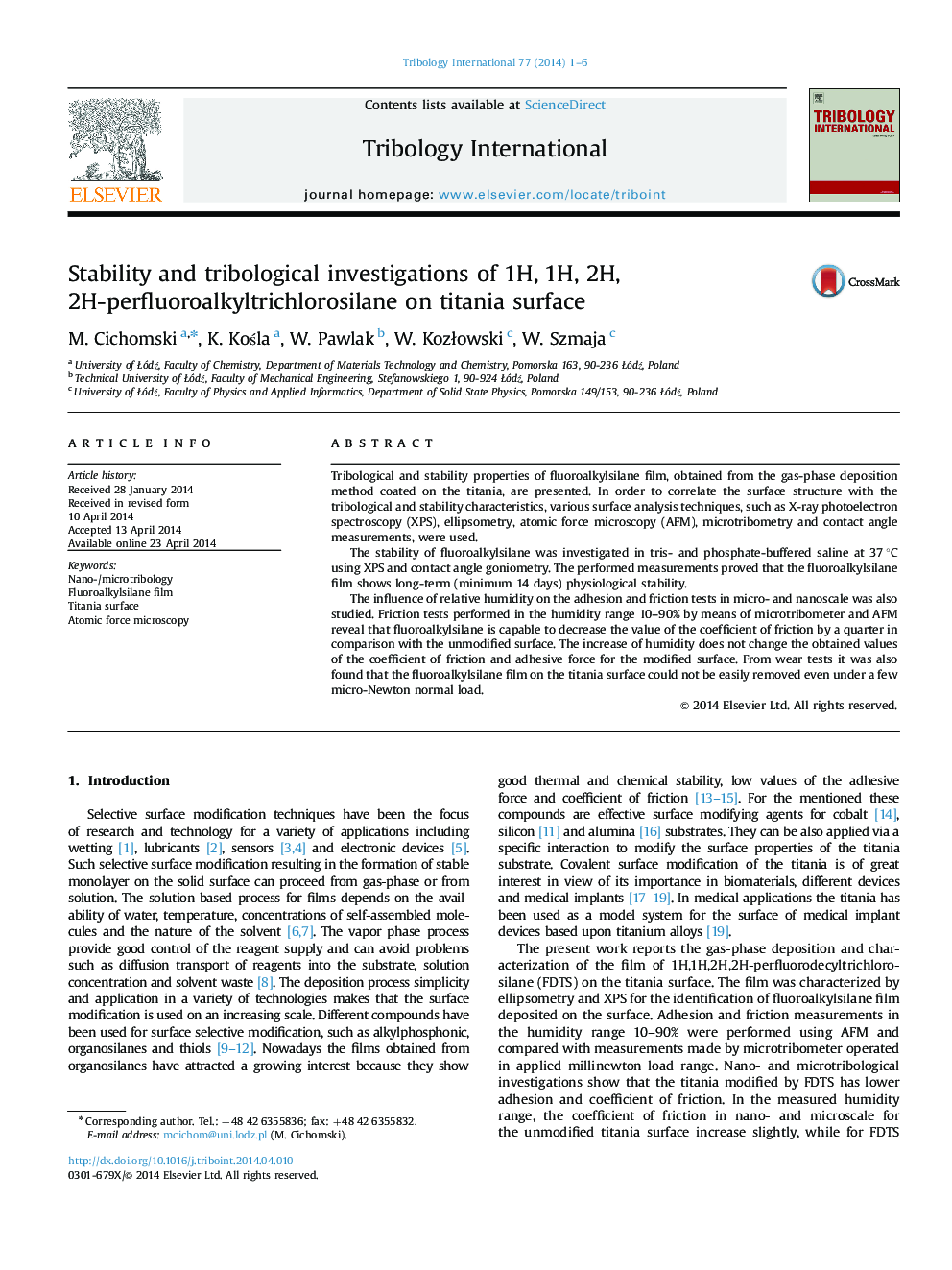| کد مقاله | کد نشریه | سال انتشار | مقاله انگلیسی | نسخه تمام متن |
|---|---|---|---|---|
| 614814 | 1454827 | 2014 | 6 صفحه PDF | دانلود رایگان |

• Titania surface modification by 1H,1H,2H,2H-perfluoroalkyltrichlorosilane was investigated.
• The effectiveness of modification procedure was monitored by XPS and ellipsometry measurements.
• The tribological performance of perfluoroalkylsilane on the titania surface in 10–90% humidity range was studied.
• The stability on buffered saline solutions of perfluoroalkylsilane on titania surface were monitored.
Tribological and stability properties of fluoroalkylsilane film, obtained from the gas-phase deposition method coated on the titania, are presented. In order to correlate the surface structure with the tribological and stability characteristics, various surface analysis techniques, such as X-ray photoelectron spectroscopy (XPS), ellipsometry, atomic force microscopy (AFM), microtribometry and contact angle measurements, were used.The stability of fluoroalkylsilane was investigated in tris- and phosphate-buffered saline at 37 °C using XPS and contact angle goniometry. The performed measurements proved that the fluoroalkylsilane film shows long-term (minimum 14 days) physiological stability.The influence of relative humidity on the adhesion and friction tests in micro- and nanoscale was also studied. Friction tests performed in the humidity range 10–90% by means of microtribometer and AFM reveal that fluoroalkylsilane is capable to decrease the value of the coefficient of friction by a quarter in comparison with the unmodified surface. The increase of humidity does not change the obtained values of the coefficient of friction and adhesive force for the modified surface. From wear tests it was also found that the fluoroalkylsilane film on the titania surface could not be easily removed even under a few micro-Newton normal load.
Journal: Tribology International - Volume 77, September 2014, Pages 1–6